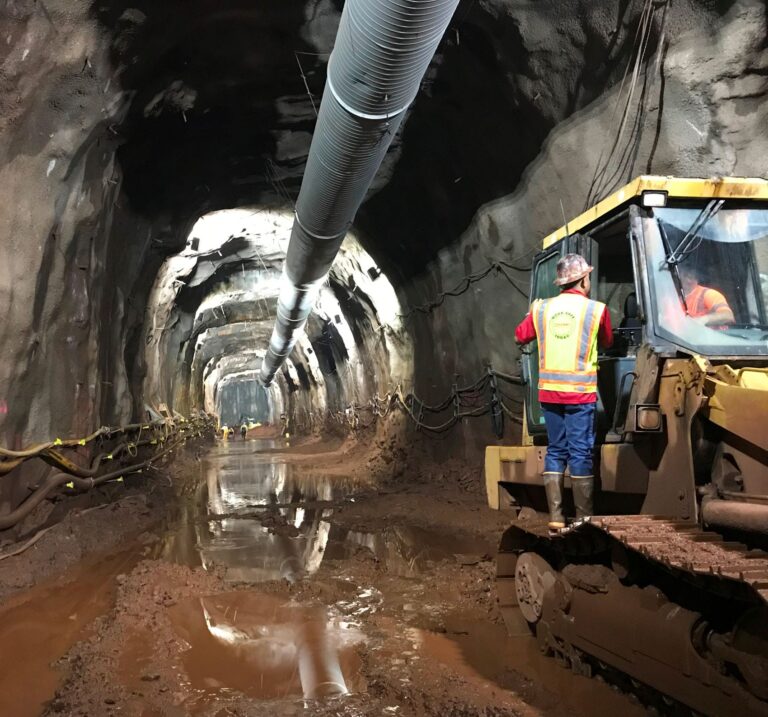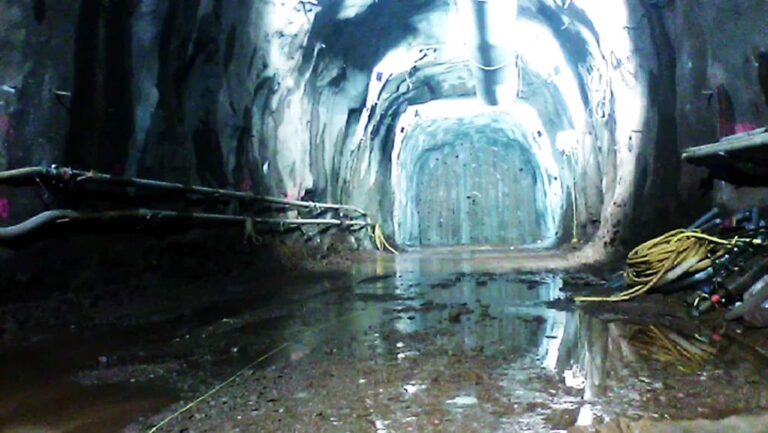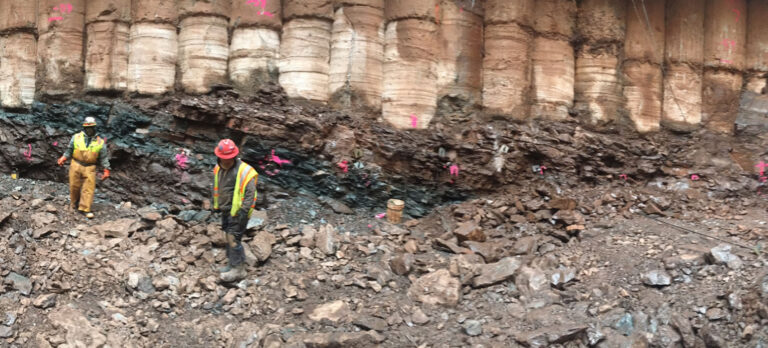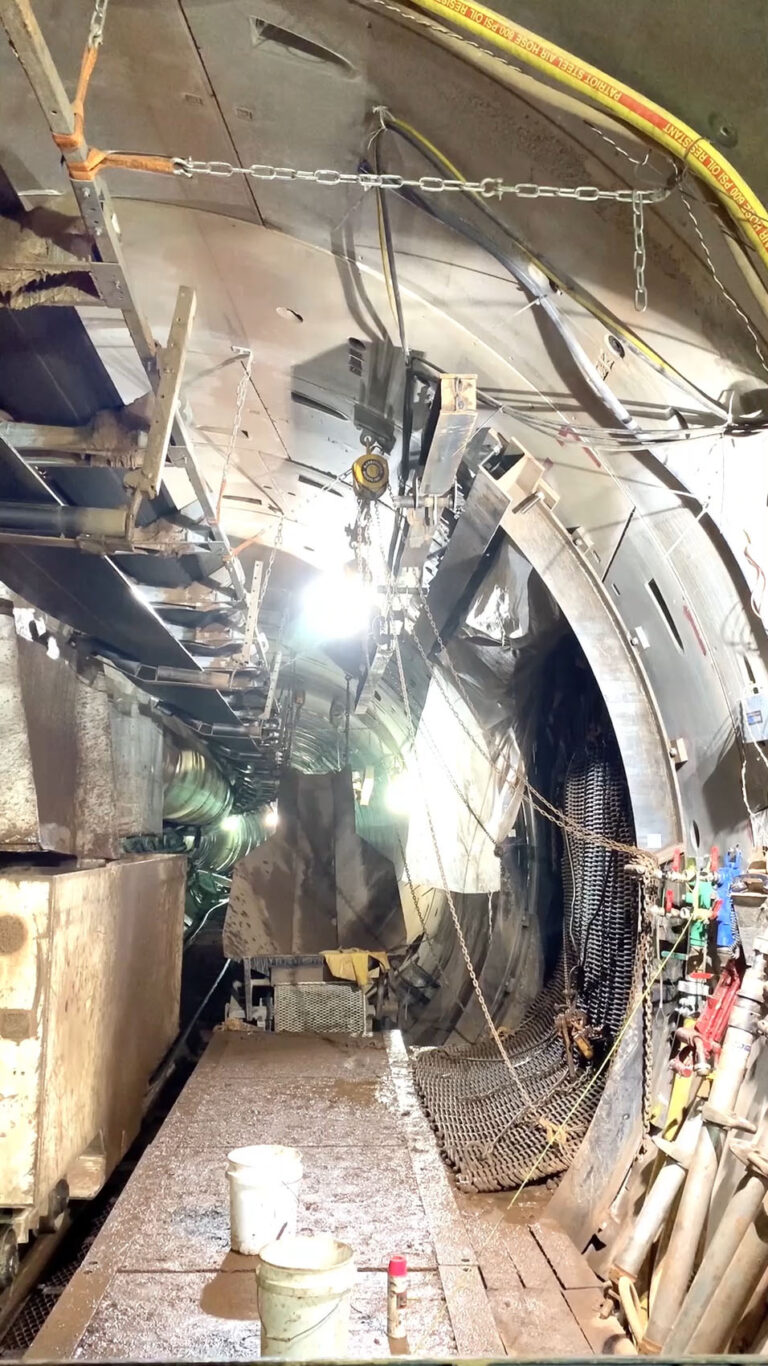Project At-a-Glance
- Deep rock CSO tunnel system beneath the densely developed urban area
- Rock lithology includes shale, siltstone, sandstone, and basalt
- Numerous faults cut across the tunnel alignment
- Drill and blast rock removal methods for starter and tail tunnels, and pump station shaft
- Full-array of construction engineering services
- Construction phase geologic mapping
- Blasting design and consulting
Project Narrative
A major component of the MDC Hartford Clean Water Project is the South Hartford Conveyance and Storage Tunnel. When complete, the tunnel will be capable of storing approximately 42 million gallons of Combined Sewer Overflow (CSO) and reduce the frequency of CSO discharge events into the Connecticut River. This 4-mile long by 18‑ft diameter tunnel is 200-ft beneath a highly developed urban area.
Project components include a 74-ft diameter by 240-ft deep pump station shaft; a 39-ft diameter by 205-ft deep TBM launch shaft; a 32-ft diameter by 216-ft deep retrieval shaft and eight vortex drop shafts. Tunneling is being accomplished with a Herrenknecht Single Shield Rock TBM that will erect pre-cast liner segments. Rock within the tunnel envelope consists of siltstone, sandstone, and shale of the Portland and East Berlin Formations and the Hampden and Holyoke Basalts. The tunnel alignment is complicated by the presence of numerous faults.
Elements of Brierley Associates’ work include the design of unreinforced secant pile shafts; initial rock support for shafts, starter and tail tunnels and adit excavations, and; TBM launch frame. We also assisted with the development of shaft and adit carrier pipe installation plans. Engineering geologic mapping was also provided by Brierley during the drill and blast excavation of the starter and tail tunnels as well as the pump station shaft.
Brierley Associates staff served as the Project Blasting Consultant for Kenny/Obayashi, JV. Services provided during construction include; blasting designs/drawings, estimating vibration levels and air overpressures at surrounding critical structures, and vibration impact mitigation measures. As blasting and rock excavation progresses, actual vibration blast design data is used for completing regression analyses to revise blast designs, as needed, and provide comments on vibrations and air overpressures to maintain levels below the required Contract Limiting Criteria.





